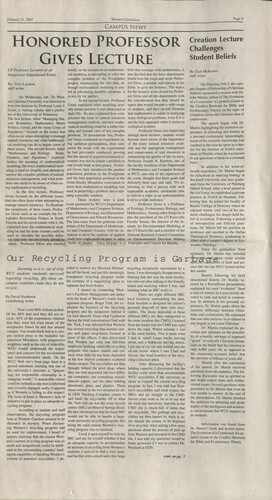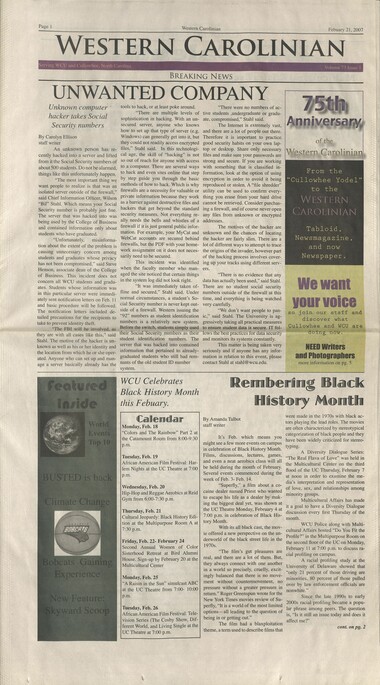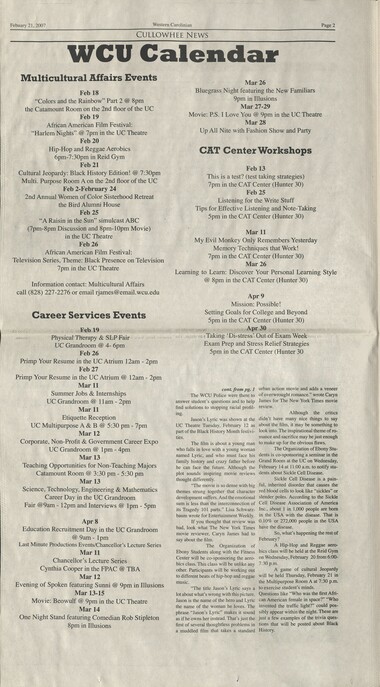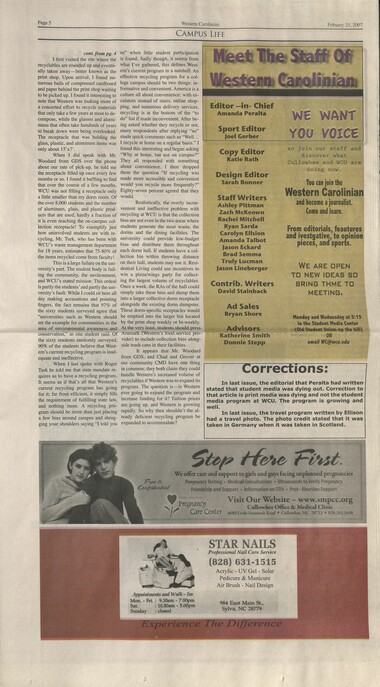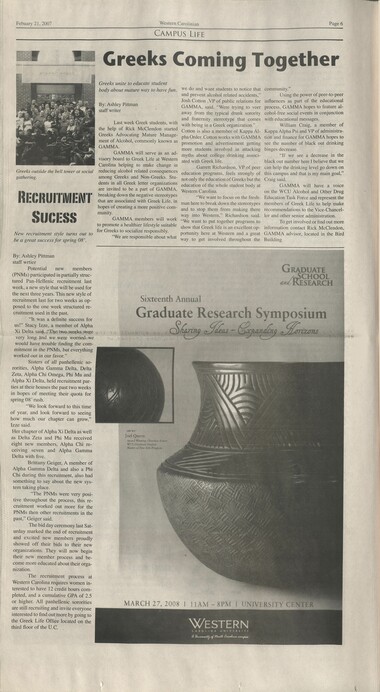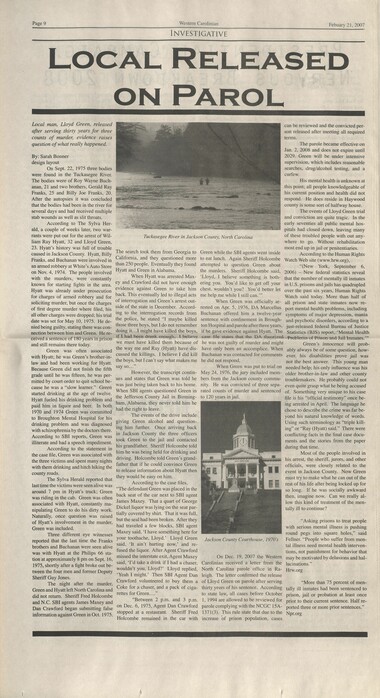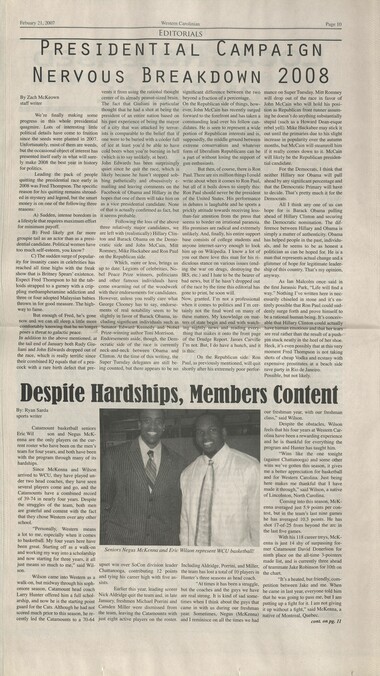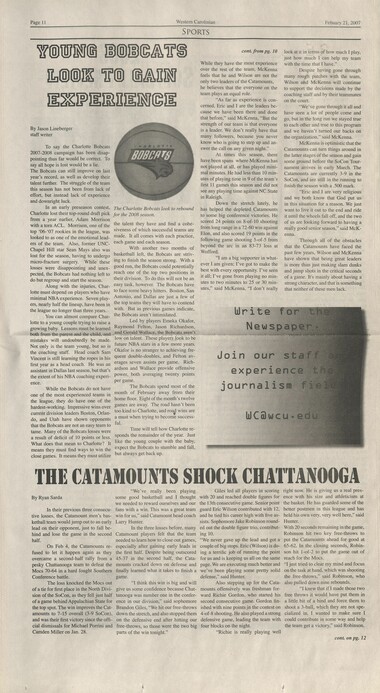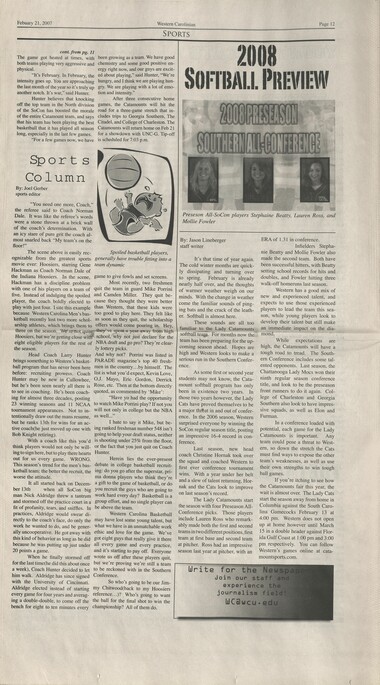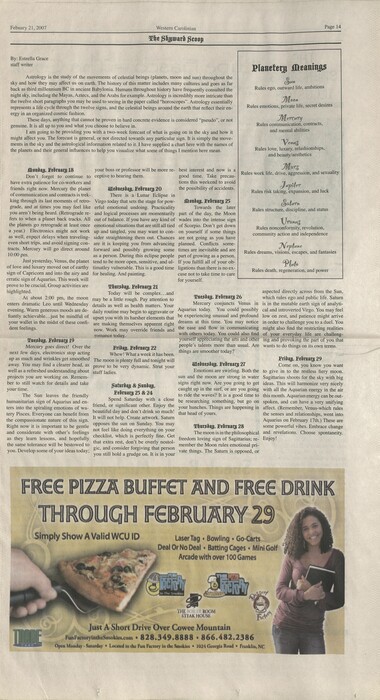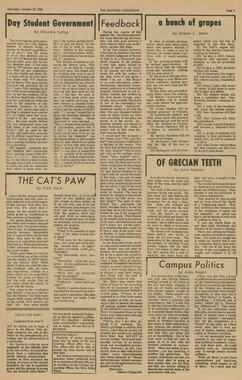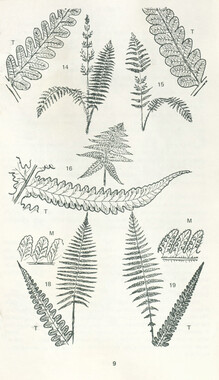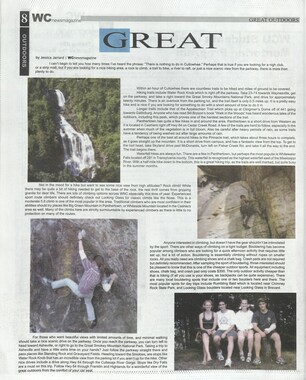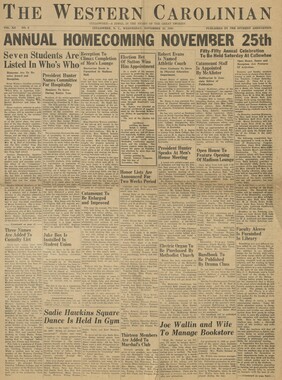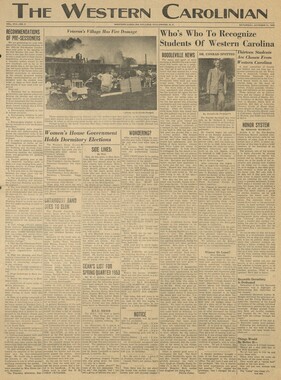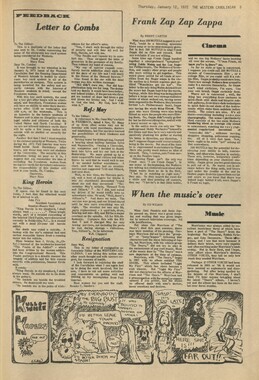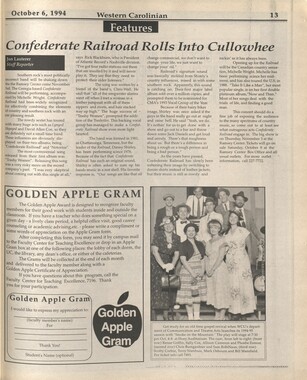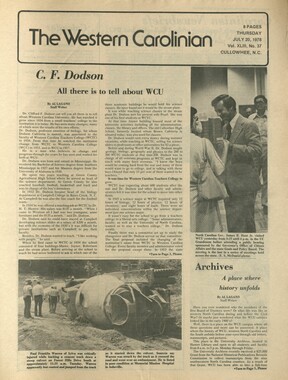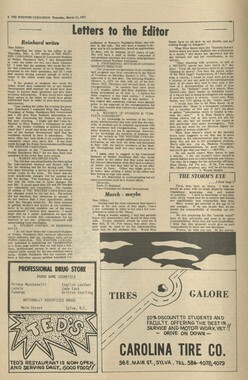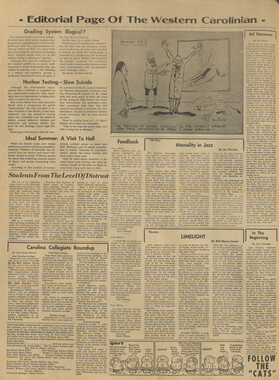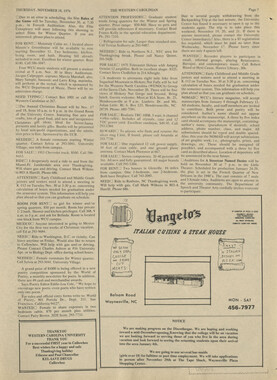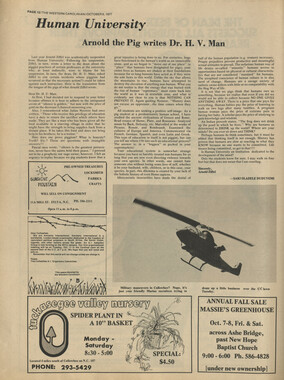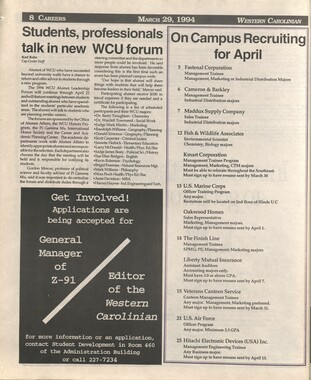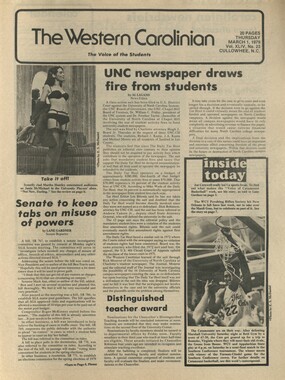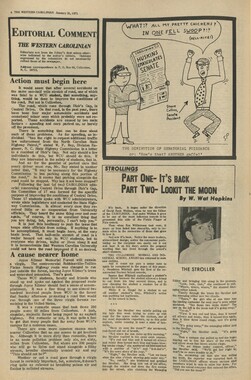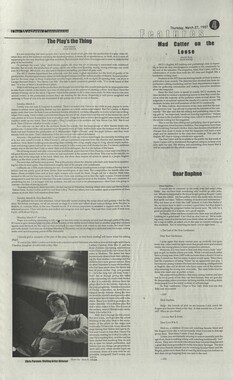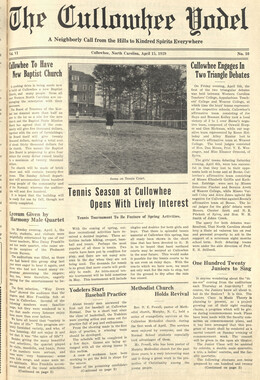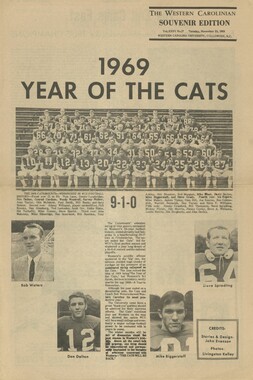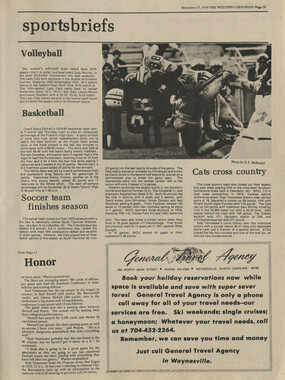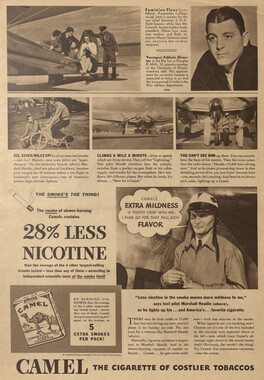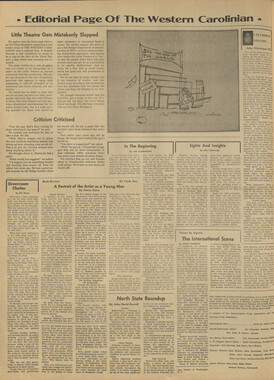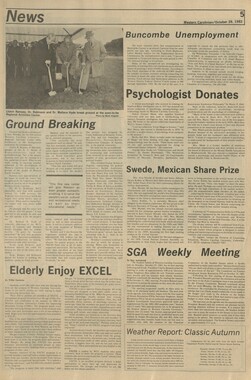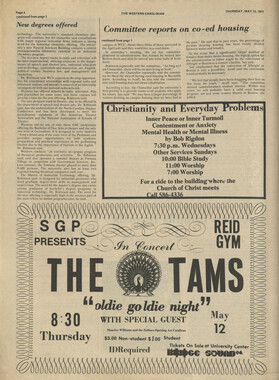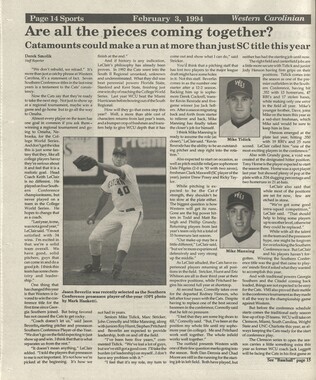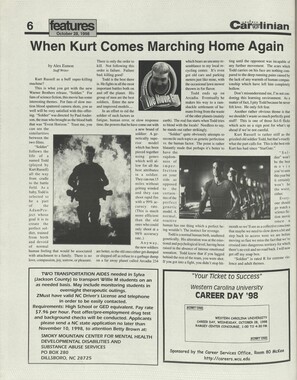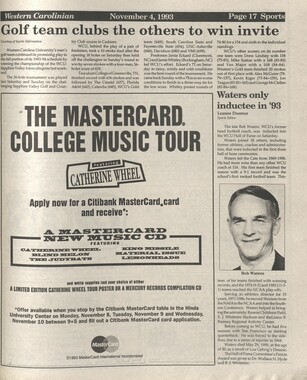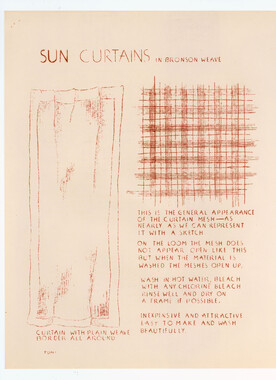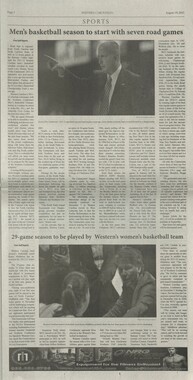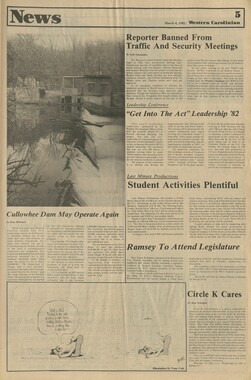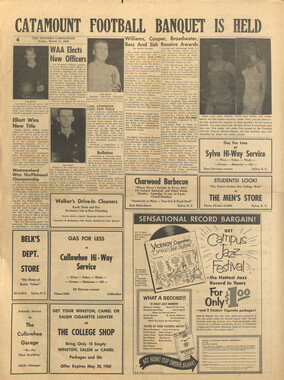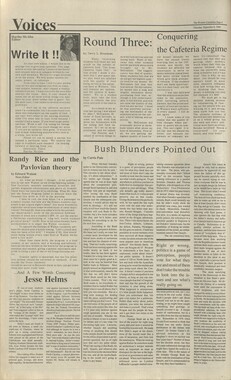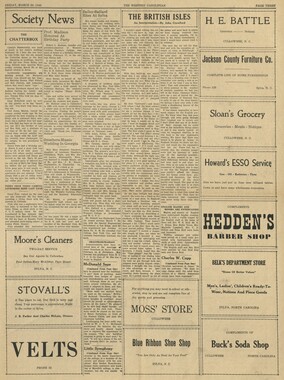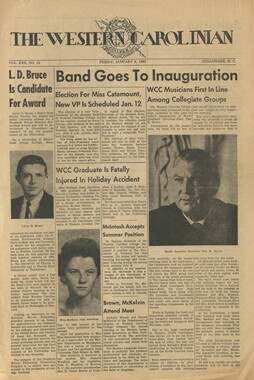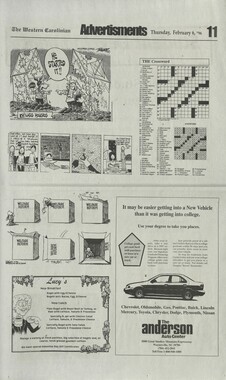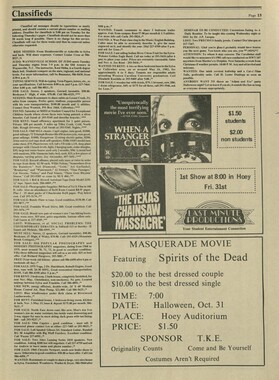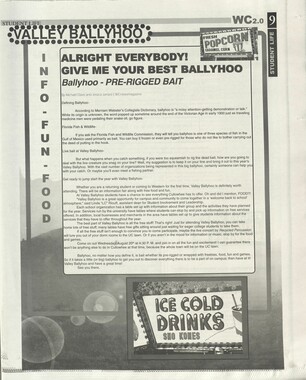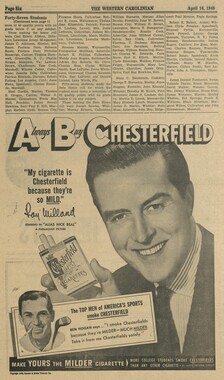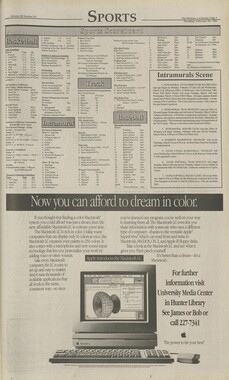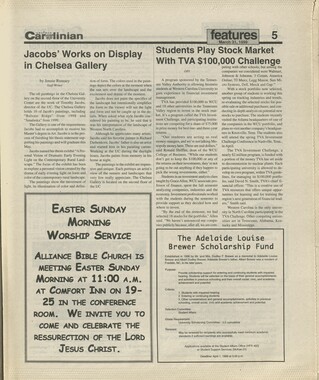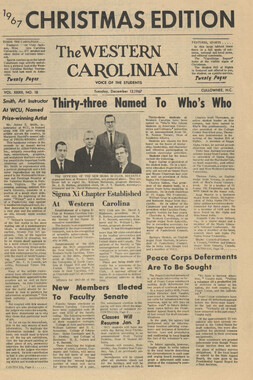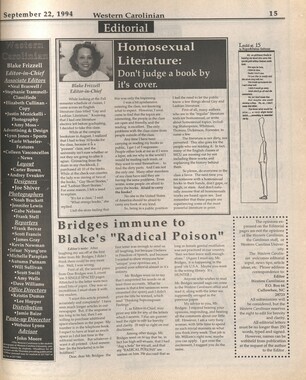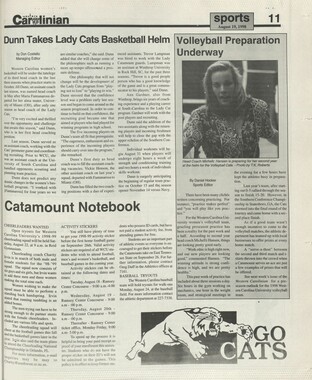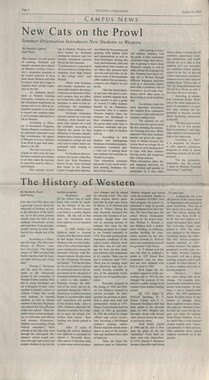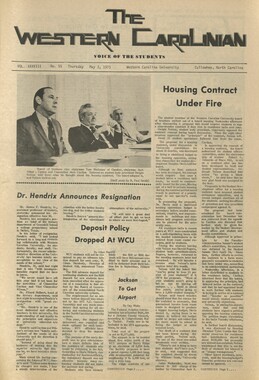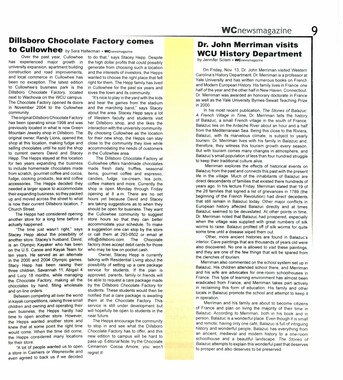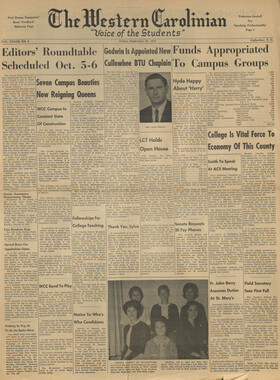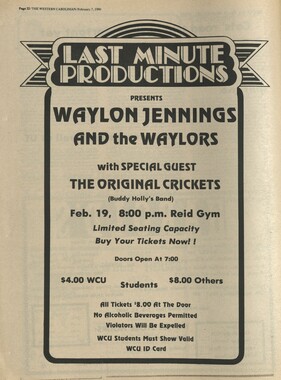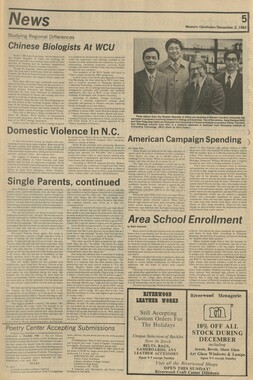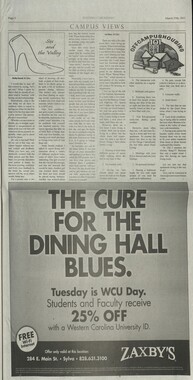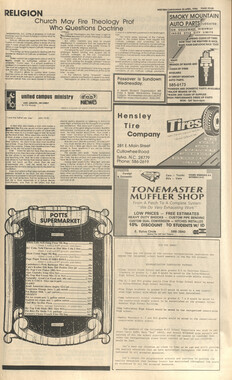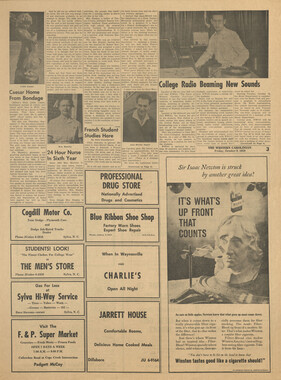Western Carolina University (21)
View all
- Canton Champion Fibre Company (2308)
- Cherokee Traditions (291)
- Civil War in Southern Appalachia (165)
- Craft Revival (1942)
- George Masa Collection (135)
- Great Smoky Mountains - A Park for America (2901)
- Highlights from Western Carolina University (422)
- Horace Kephart (941)
- Journeys Through Jackson (159)
- LGBTQIA+ Archive of Jackson County (85)
- Oral Histories of Western North Carolina (314)
- Picturing Appalachia (6798)
- Stories of Mountain Folk (413)
- Travel Western North Carolina (153)
- Western Carolina University Fine Art Museum Vitreograph Collection (129)
- Western Carolina University Herbarium (92)
- Western Carolina University: Making Memories (738)
- Western Carolina University Publications (2491)
- Western Carolina University Restricted Electronic Theses and Dissertations (146)
- Western North Carolina Regional Maps (71)
- World War II in Southern Appalachia (131)
University of North Carolina Asheville (6)
View all
- Allanstand Cottage Industries (62)
- Appalachian National Park Association (53)
- Bennett, Kelly, 1890-1974 (1463)
- Berry, Walter (76)
- Brasstown Carvers (40)
- Carver, George Washington, 1864?-1943 (26)
- Cathey, Joseph, 1803-1874 (1)
- Champion Fibre Company (233)
- Champion Paper and Fibre Company (297)
- Cherokee Indian Fair Association (16)
- Cherokee Language Program (22)
- Crowe, Amanda (40)
- Edmonston, Thomas Benton, 1842-1907 (7)
- Ensley, A. L. (Abraham Lincoln), 1865-1948 (275)
- Fromer, Irving Rhodes, 1913-1994 (70)
- George Butz (BFS 1907) (46)
- Goodrich, Frances Louisa (120)
- Grant, George Alexander, 1891-1964 (96)
- Heard, Marian Gladys (60)
- Kephart, Calvin, 1883-1969 (15)
- Kephart, Horace, 1862-1931 (313)
- Kephart, Laura, 1862-1954 (39)
- Laney, Gideon Thomas, 1889-1976 (439)
- Masa, George, 1881-1933 (61)
- McElhinney, William Julian, 1896-1953 (44)
- Niggli, Josephina, 1910-1983 (10)
- North Carolina Park Commission (105)
- Osborne, Kezia Stradley (9)
- Owens, Samuel Robert, 1918-1995 (11)
- Penland Weavers and Potters (36)
- Roberts, Vivienne (15)
- Roth, Albert, 1890-1974 (142)
- Schenck, Carl Alwin, 1868-1955 (1)
- Sherrill's Photography Studio (2565)
- Southern Highland Handicraft Guild (127)
- Southern Highlanders, Inc. (71)
- Stalcup, Jesse Bryson (46)
- Stearns, I. K. (213)
- Thompson, James Edward, 1880-1976 (226)
- United States. Indian Arts and Crafts Board (130)
- USFS (683)
- Vance, Zebulon Baird, 1830-1894 (1)
- Weaver, Zebulon, 1872-1948 (58)
- Western Carolina College (230)
- Western Carolina Teachers College (282)
- Western Carolina University (2008)
- Western Carolina University. Mountain Heritage Center (18)
- Whitman, Walt, 1819-1892 (10)
- Wilburn, Hiram Coleman, 1880-1967 (73)
- Williams, Isadora (3)
- Cain, Doreyl Ammons (0)
- Crittenden, Lorraine (0)
- Rhodes, Judy (0)
- Smith, Edward Clark (0)
- Appalachian Region, Southern (2924)
- Asheville (N.C.) (1941)
- Avery County (N.C.) (26)
- Blount County (Tenn.) (195)
- Buncombe County (N.C.) (1672)
- Cherokee County (N.C.) (283)
- Clay County (N.C.) (556)
- Graham County (N.C.) (236)
- Great Smoky Mountains National Park (N.C. and Tenn.) (525)
- Haywood County (N.C.) (3569)
- Henderson County (N.C.) (70)
- Jackson County (N.C.) (4913)
- Knox County (Tenn.) (35)
- Knoxville (Tenn.) (13)
- Lake Santeetlah (N.C.) (10)
- Macon County (N.C.) (420)
- Madison County (N.C.) (215)
- McDowell County (N.C.) (39)
- Mitchell County (N.C.) (135)
- Polk County (N.C.) (35)
- Qualla Boundary (982)
- Rutherford County (N.C.) (76)
- Swain County (N.C.) (2182)
- Transylvania County (N.C.) (270)
- Watauga County (N.C.) (12)
- Waynesville (N.C.) (86)
- Yancey County (N.C.) (72)
- Aerial Photographs (3)
- Aerial Views (60)
- Albums (books) (4)
- Articles (1)
- Artifacts (object Genre) (228)
- Bibliographies (1)
- Biography (general Genre) (2)
- Cards (information Artifacts) (38)
- Clippings (information Artifacts) (191)
- Copybooks (instructional Materials) (3)
- Crafts (art Genres) (622)
- Depictions (visual Works) (21)
- Design Drawings (1)
- Drawings (visual Works) (185)
- Envelopes (73)
- Exhibitions (events) (1)
- Facsimiles (reproductions) (1)
- Fiction (general Genre) (4)
- Financial Records (12)
- Fliers (printed Matter) (67)
- Glass Plate Negatives (381)
- Guidebooks (2)
- Internegatives (10)
- Interviews (815)
- Land Surveys (102)
- Letters (correspondence) (1013)
- Manuscripts (documents) (618)
- Maps (documents) (177)
- Memorandums (25)
- Minutes (administrative Records) (59)
- Negatives (photographs) (6090)
- Newsletters (1290)
- Newspapers (2)
- Notebooks (8)
- Occupation Currency (1)
- Paintings (visual Works) (1)
- Pen And Ink Drawings (1)
- Periodicals (193)
- Personal Narratives (10)
- Photographs (12976)
- Plans (maps) (1)
- Poetry (5)
- Portraits (4568)
- Postcards (329)
- Programs (documents) (181)
- Publications (documents) (2443)
- Questionnaires (65)
- Relief Prints (26)
- Sayings (literary Genre) (1)
- Scrapbooks (282)
- Sheet Music (2)
- Slides (photographs) (402)
- Songs (musical Compositions) (2)
- Sound Recordings (796)
- Specimens (92)
- Speeches (documents) (18)
- Tintypes (photographs) (8)
- Transcripts (322)
- Video Recordings (physical Artifacts) (23)
- Text Messages (0)
- A.L. Ensley Collection (275)
- Appalachian Industrial School Records (7)
- Appalachian National Park Association Records (336)
- Axley-Meroney Collection (2)
- Bayard Wootten Photograph Collection (20)
- Bethel Rural Community Organization Collection (7)
- Blumer Collection (5)
- C.W. Slagle Collection (20)
- Canton Area Historical Museum (2110)
- Carlos C. Campbell Collection (462)
- Cataloochee History Project (64)
- Cherokee Studies Collection (4)
- Daisy Dame Photograph Album (5)
- Daniel Boone VI Collection (1)
- Doris Ulmann Photograph Collection (112)
- Elizabeth H. Lasley Collection (1)
- Elizabeth Woolworth Szold Fleharty Collection (4)
- Frank Fry Collection (95)
- George Masa Collection (173)
- Gideon Laney Collection (452)
- Hazel Scarborough Collection (2)
- Hiram C. Wilburn Papers (28)
- Historic Photographs Collection (236)
- Horace Kephart Collection (861)
- Humbard Collection (33)
- Hunter and Weaver Families Collection (1)
- I. D. Blumenthal Collection (4)
- Isadora Williams Collection (4)
- Jesse Bryson Stalcup Collection (47)
- Jim Thompson Collection (224)
- John B. Battle Collection (7)
- John C. Campbell Folk School Records (80)
- John Parris Collection (6)
- Judaculla Rock project (2)
- Kelly Bennett Collection (1482)
- Love Family Papers (11)
- Major Wiley Parris Civil War Letters (3)
- Map Collection (12)
- McFee-Misemer Civil War Letters (34)
- Mountain Heritage Center Collection (4)
- Norburn - Robertson - Thomson Families Collection (44)
- Pauline Hood Collection (7)
- Pre-Guild Collection (2)
- Qualla Arts and Crafts Mutual Collection (12)
- R.A. Romanes Collection (681)
- Rosser H. Taylor Collection (1)
- Samuel Robert Owens Collection (94)
- Sara Madison Collection (144)
- Sherrill Studio Photo Collection (2558)
- Smoky Mountains Hiking Club Collection (616)
- Stories of Mountain Folk - Radio Programs (374)
- The Reporter, Western Carolina University (510)
- Venoy and Elizabeth Reed Collection (16)
- WCU Gender and Sexuality Oral History Project (32)
- WCU Mountain Heritage Center Oral Histories (25)
- WCU Oral History Collection - Mountain People, Mountain Lives (71)
- WCU Students Newspapers Collection (1923)
- Western North Carolina Tomorrow Black Oral History Project (69)
- William Williams Stringfield Collection (2)
- Zebulon Weaver Collection (109)
- African Americans (390)
- Appalachian Trail (35)
- Artisans (521)
- Cherokee art (84)
- Cherokee artists -- North Carolina (10)
- Cherokee language (21)
- Cherokee pottery (101)
- Cherokee women (208)
- Church buildings (190)
- Civilian Conservation Corps (U.S.) (111)
- College student newspapers and periodicals (2012)
- Dams (107)
- Dance (1023)
- Education (222)
- Floods (61)
- Folk music (1015)
- Forced removal, 1813-1903 (2)
- Forest conservation (220)
- Forests and forestry (1196)
- Gender nonconformity (4)
- Great Smoky Mountains National Park (N.C. and Tenn.) (181)
- Hunting (45)
- Landscape photography (25)
- Logging (119)
- Maps (83)
- Mines and mineral resources (8)
- North Carolina -- Maps (18)
- Paper industry (38)
- Postcards (255)
- Pottery (135)
- Railroad trains (72)
- Rural electrification -- North Carolina, Western (3)
- School integration -- Southern States (2)
- Segregation -- North Carolina, Western (5)
- Slavery (5)
- Sports (452)
- Storytelling (243)
- Waterfalls -- Great Smoky Mountains (N.C. and Tenn.) (66)
- Weaving -- Appalachian Region, Southern (280)
- Wood-carving -- Appalachian Region, Southern (328)
- World War, 1939-1945 (173)
Western Carolinian Volume 73 Number 01
Item
Item’s are ‘child’ level descriptions to ‘parent’ objects, (e.g. one page of a whole book).
-
-
Febuary 21, 2007 Western Carolinian CAMPUS NEWS _ Page 4 HONORED PROFESSOR GIVES LECTURE UT Professor Lectures at an Integrative Educational Event. By: Truly Lucman staff writer On Wednesday, Jan. 29, West- ern Carolina University was honored to host two lectures by Professor Louis J. Gross, a visiting scholar and a profes- sor at the University of Tennessee. The first lecture, titled Managing Nat- ural Resources: Mathematics Meets briefly on the limitations of mathemati- cal modeling in attempting to solve the complex problem of the Everglades project, emphasizing the fact that, al- though mathematical modeling is use- ful in calculating possible solutions, it is not,.by far, perfect. In the second lecture, Professor Gross explained what modeling actu- ally meant and how it was often used in daily life. He also explained how com- plicated the issue of natural resources management could be, and how mathe- Politics, Greed, and the Army Corps of atical modeling could be a rather lim- Engineers, focused on the issues that often occur when attempting to manage natural resources and what mathemati- cal modeling can do to negate some of these issues. The second lecture, titled Mathematics and Biology: Bears, Panthers, and Equations, explored further the meaning of mathematical modeling, the ways mathematical mod- eling is used to simplify and attempt to answer the complex problem of natural resources management, and what prob- lems one needs to be aware of when us- ing mathematical modeling. In the first lecture, Professor Gross focused on the different issues that one often faces when attempting to manage natural resources. To illustrate the complexity of these issues, Profes- sor Gross used as an example the Ev- erglades Restoration Project in South Florida and his involvement with it. He explained how the mathematical mod- eling he and his team created could be used to calculate the pos ible differ- \ ane seal Te a iting and limited view of this complex problem. To demonstrate this, Profes- sor Gross conducted: an experiment us- ing audience participation, then com- pared the result with the experiments he had previously conducted, proving that the spread of population/natural re- sources was not as simple a problem as one would think at first glance. Profes- sor Gross then introduced the panther population problem in the Everglades and the bear population problem in the Great Smoky Mountains reservation to show how mathematical modeling was used in projecting a problem and evalu- ating a possible solution. These lectures were a joint event sponsored by WCU's Department of Mathematics and Computer Science, Department of Biology, and Department of Geosciences and Natural Resources. The idea came from the graduate com- mittee of the Department of Mathemat- ics and Computer Science, with the in- tention to show 2s sadn of applied field that overlaps with mathematics, it was decided that the three departments would host the event and invite Profes- sor Gross, a scholar well-known in his fields, to give the lectures. The topics for the lectures were chosen by Profes- sor Gross and all the departments with the consideration that they should be - topics that would interest a wide range of students, and they should illustrate that mathematics is useful in analyzing many biological problems, even if it is not the only approach when it comes to ecological systems. Professor Gross also hoped that through these lectures, students would become more aware of the importance of the many natural resources avail- able and the appropriate management. and conservation of said resources in maintaining the quality of life we have. Professor Joseph B. Klerlein, one of the faculty members of the Department of Mathematics and Computer Science at WCU, also one of the organizers of the event, thought that these goals had definitely been met, and said, It's in- teresting to find a person with such impactable academic credentials able to deliver a topic at an understandable level to a wide audience. Professor Gross is a Professor of Ecology, Evolutionary Biology, and Mathematics. Among other things he is also the president of the UT-Knoxville Faculty Senate, the director of the In- stitute for Environmental Modeling at the UT-Knoxville, and a member of the National Research Council Committee on: Environmental: Decision Making . a_ Principles and Criteria for Models... Creation Lecture Challenges Student Beliefs By Zach McKeown staff writer On Thursday, Feb.7, the cam- pus chapter of Fellowship of Christian Athletes sponsored a session with Dr. Jobe Martin, author of The Evolution of a Creationist: A Laymen's Guide to the Conflict Between the Bible and Evolutionary Theory, on the topic of evolution versus the Christian idea of creationism. The speech began with Dr. Martin highlighting his extensive ex- perience in schooling and history as a devoted evolutionist. Interestingly, much of his scientific knowledge was credited to the time he spent as a den- tist for the families of NASA astro- nauts in Florida, where he was known > to ask questions of them on a constant basis. In addition to his word-of- mouth experience, Dr. Martin began his education as studying biology at Bucknell University and later gradu- ated from the University of Pittsburg Dental School. After a brief period in the Air Force, he established a private practice at NASA in Houston. Fol- lowing that, he joined the faculty of Baylor College of Dentistry where he enjoyed tenure, until two of his stu- dents challenged his deeply-held be- lief in evolution. Following a period of introspection and difficult ques- tions, Dr. Martin left his position as professor and enrolled in the Dallas Theological Seminary, graduating in 1986" with'd masters stain in Sys" e temati Theology! bh AIGUE Te 00- Since his graduation from seminary, Dr. Martin has traveled s of faith and sci- Ont Recycling Program is Ga rib ei cp een many simi Alarming as it is, out of sixty WCU students randomly surveyed regarding recycling, fifty-three on- campus residents claim they do not recycle. By David Stainback contributing writer Thats over 88% of those polled. Of the 88% that said they did not re- cycle, 45% of the respondents claimed that they were not even aware of the receptacles found far and few around campus. You would think that as a cam- pus tucked away in the beautiful Ap- palachian Mountains with progressive neighbors such as the city of Asheville, WCU would understand the impor- tance and concern for the environment and conversationalist ideals. On the WCU Web sites front page there is a posted statement claiming that one of the universitys missions is [prepar- ing] for responsible citizenship in a changing world. A responsible citizen could be defined as one that is informed and civically engaged; sadly, it appears as if Western is failing in this respect. The issue at hand is Westerns lack of initiative to put in place an adequate re- cycling program. According to student and staff observations, the recycling program here at Western Carolina seemed to be shrouded in mystery. When discuss- ing Westerns recycling program and its need for improvement, I heard of rumors claiming that the reason West- erns current recycling program was so small and insignificant could be attrib- uted to the surrounding counties inad- equate capability of handling Westerns volume of potential recyclables. I de- cided to remove my Sherlock Holmes hat off the hook, and put this seemingly transparent recycling program under the scrutiny of a magnifying glass to separate fact from fiction. I started by contacting West- erns Facilities Management and spoke with the head of Westerns waste man- agement program, Roger Turk. He ex- plained the logistics of the recycling program and the manpower behind it (or lack thereof). From what I gathered during the brief conversation I had with Mr. Turk, I was informed that Western has several recycling bins around cam- pus and paper drop-boxes located in most of the offices. I also discovered that Western has only one full-time employee working under the recycling program who makes rounds and col- lects what little bit has been deposited in the few elusive containers scattered about campus. The recyclables are then brought behind the print shop, where they are then deposited into two differ- ent containers; one containing miscel- laneous papers, and the other holding aluminum, glass, and plastics. These items remain in the two receptacles un- til GDS Trucking Company comes in and hauls the recyclables off to what Mr. Turk told me was the scrap recycle center (SRC) on Mineral Springs Road. He also informed me that the local SRC would not be able to handle a large- scale university recycling program, this being the main reason Westerns recy- cling program was so minimal. I took it upon myself to visit the SRC and see for myself whether it had an adequate capacity to accommodate an increase in recycling from Westerns students. I arrived to find a very mini- mal facility with a shack and a few large recycling receptacles surrounded by a fence. I was thoroughly disappointed in thinking that this was the main facility, but relieved after talking to the friendly tenant and realizing where I was, and learning what an SRC really is. There are eight different SRC local locations surrounding the area. Each location is designed for citizens personal drop-off of their own recy- clables. The items deposited at these different SRCs are then transported to the main location (the CMD). I learned from the tenant that the CMD was right down the road. Within minutes I was at the main facility. This is more what I had in mind! Large trucks moving about, and a bulldozer moving debris. I got out of my car and walked into the on-site trailer where I met Chad and Grover, the head honchos of the recy- cling collection plant. After discussing the facilitys holding capacity, I discovered that the facility could more than accommodate WCU recyclables if the university so chose to expand the current recycling program. In fact, I was told that West- erns recyclables and trash bypass the SRCs and go straight to the CMD. Grover even went as far as to say that the trash our university deposits at the CMD site is chock-full of items that are recyclable. The garbage and recy- clables are then hauled by truck to ar- eas outside the county to be disposed of or recycled. After asking a few more questions about the process of pick-up from Western and transport to the CMD site, I was told my questions would be better answered if I was to contact Mr. Woodard at GDS. cont. on pg. 5 ence like the one WCU hosted earlier this month. Shortly following his brief educational history, Dr. Martin, as- sisted by a PowerPoint presentation, explained his own evolution from a man of science to a man strictly de- voted to faith and belief in creation-. ism. In addition to his personal ex- perience, Dr. Martin spoke about the concrete difference between Chris- tians and evolutionists. He explained that one who believes in evolution to any degree is not a true Christian. Dr. Martin explained his po- sitions and opinions on the possibil- ity of scientific sabotage of supposed proof of radically Christian claims, such as the belief that the universe is only 6,000 years old, as opposed to the commonly-accepted belief that the universe is billions of years old. Shortly after the conclusion of his speech, Dr. Martin received questions from the audience. The fol- lowing discussion was as spirited as one might expect from such contro- versial issues. Several questions were presented to Dr. Martin that even he was unable to answer. At the end of the presentation, Dr. Martin thanked the audience for attending and spoke highly of the intelligence and academ- ic environment that WCU inspires in its students. Information was found from Dr. Martins book and lecture series, The Evolution of a Creationist: A Lay- men's Guide to the Conflict Between the Bible and Evolutionary Theory
Object
Object’s are ‘parent’ level descriptions to ‘children’ items, (e.g. a book with pages).
-
The Western Carolinian is Western Carolina University's student-run newspaper. The paper was published as the Cullowhee Yodel from 1924 to 1931 before changing its name to The Western Carolinian in 1933.
-

